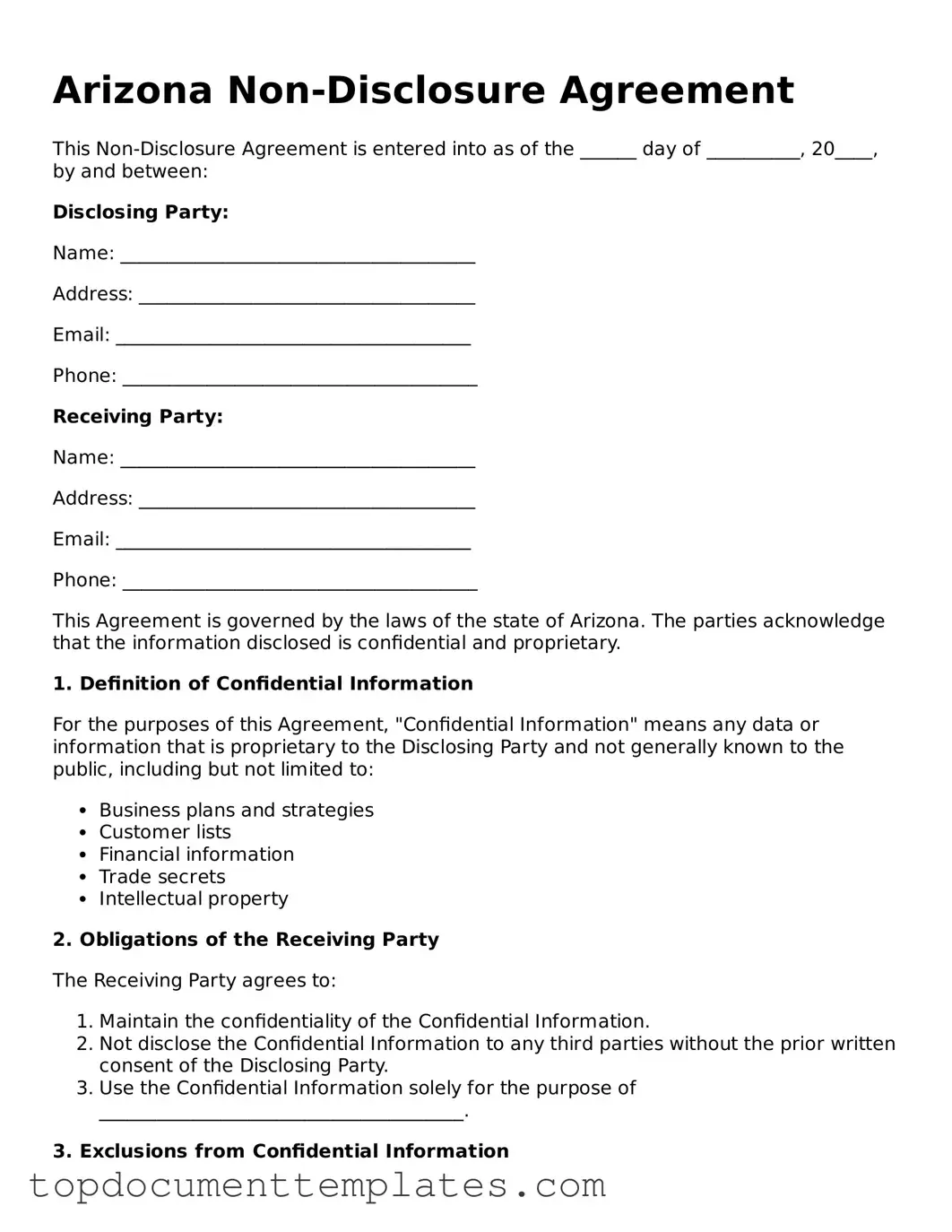Valid Non-disclosure Agreement Form for Arizona State
A Non-disclosure Agreement (NDA) in Arizona is a legal document designed to protect confidential information shared between parties. By signing this agreement, individuals or businesses can ensure that sensitive information remains private and is not disclosed to unauthorized third parties. Understanding the importance of an NDA can help you safeguard your intellectual property and business interests.
If you are ready to take the next step in protecting your confidential information, fill out the Arizona Non-disclosure Agreement form by clicking the button below.
Open This Form
